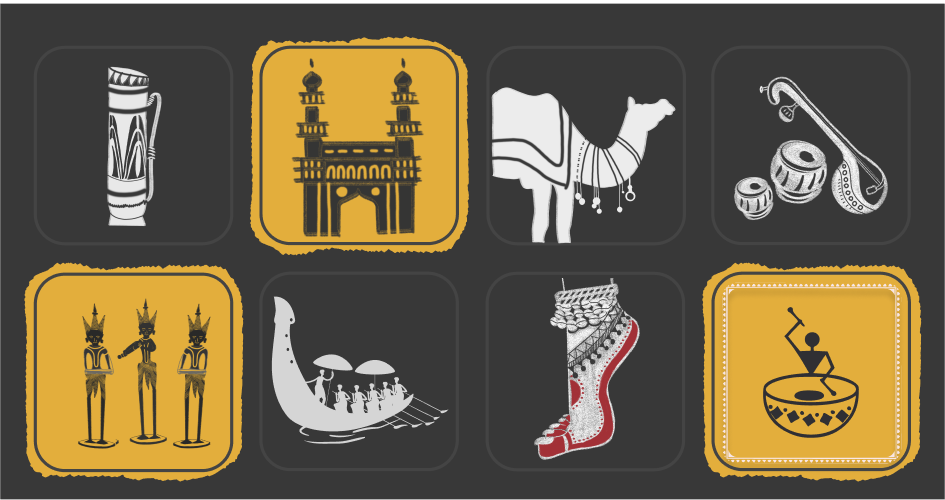Unraveling the Mysteries of Keezhadi: Unlocking the Ancient Secrets of Tamil Civilization
The name Keeladi strikes the imagination in historians, archaeologists, and any kind of culture vulture. A place within Tamil Nadu, India, has given archeologists the ability to gain an eye into an ancient Tamil civilization which dates back 2,500 years ago. It is located close to the town of keeladi in Sivagangai District and has unearthed treasure troves of artifacts, inscriptions, and remnants of an urban culture that compel new questions regarding the nature of South India in olden times.
Many have been convinced about the existence of a highly flourishing, sophisticated Tamil civilization far older than anybody ever estimated. Much ancient history of India has often revolved around and been credited either to the Indus Valley Civilization or Vedic culture. Now, keeladi has exposed a life as well as ancient Tamil culture considerably before other greater dynasties came into ascendance.
A Journey Back in Time
Keeladi first came into the limelight in 2015 when archaeologists from the Tamil Nadu Archaeology Department began digging at the site. What they unearthed has created a flurry of interest and excitement, particularly among those who follow ancient Indian history. The site, which is circa Sangam periods or 6th century BCE to 3rd century CE, has revealed a complex, organized society that was involved with trade, arts, and cultural exchange-belonging, so it was believed, only in urban centers such as the Indus Valley.
The first excavation had yielded terracotta sculptures, pottery, inscriptions, and a series of brick structures. All these have been crucial to understanding the social and cultural tapestry of ancient Tamil Nadu. The existence of inscriptions in the Tamil-Brahmi script reflects that the region was at an advanced level of literacy, making it one of the earliest sites that have reflected the linguistic and cultural richness of the Tamils.
Cultural Impact of keeladi
The importance of keeladi lies in much more than just the worth of discovery. Instead, keeladi gets proud testimony in being able to claim such rich cultural heritage from the ancestors; keeladi can speak out on an epoch which bore witness to such a flowering with richness in its life where Tamil literature started playing instrumental roles in developing the very character of the Tamil communities until today.
The society at keeladi was filled with poetry, art, and music. Excavations at the site show a large number of artifacts that indicate a very vibrant cultural sphere. These include pottery sets with intricate designs, terracotta figurines of animals and human-like figures, and beads showing a well-developed trading network. All this indicates that the people of keeladi had an advanced lifestyle focused on agriculture, trade, and the appreciation of art and beauty.
Interestingly, the terracotta figurines unearthed at keeladi contain images of several deities, indicating a relationship with the religious practices prevalent at that time. There is no direct evidence of religious activities, but the presence of these figurines hints at the significance of spirituality and rituals in the lives of people at keeladi.
The Architectural Marvels of keeladi
The architecture at keeladi is equally interesting. The brick structures visible at the site show a planned urban settlement with considerable foresight into its design. Good quality baked bricks were used in the construction, and they had moved to the use of bricks for the building, which was not commonly found in other civilizations. Examples of several drainage systems were visible at the site, displaying care over sanitation and urban planning.
Further, with the existence of a large number of ceramic ware, which boasts pottery items decorated with distinctive geometric designs, an insight into the day-to-day living of the people of keeladi comes to the forefront. The varied fine and coarse wares bring to the limelight people highly-skilled artisans who evolved with refined abilities in processes such as pottery-making and metal-working.
The Impact on Tamil Identity
Keeladi has now become a matter of pride for the Tamil race. For a long time, this region was considered to be a part of the greater Dravidian civilization, but now the discoveries in keeladi have reaffirmed the uniqueness of Tamil heritage. The artifacts and inscriptions that have been found at keeladi not only reveal the technological and artistic growth of the people of that period but also explain the linguistic and cultural growth of the Tamils.
Another section of writing that can be traced from this site is Tamil-Brahmi, the earliest form of writing in South India. It is a variant of the Brahmi script, which forms a very important connecting point to understand the growth of the written Tamil. This writing helped historians and linguists trace the roots of the Tamil language and its evolution over millennia.
Effects of this Writing on Tamil Identity
Keeladi has emerged as the treasure of pride for the Tamils. Although the region itself had been considered a component part of the greater Dravidian civilization for centuries, the findings at keeladi have redefined and confirmed the difference in Tamil heritage. The artifacts and inscriptions at keeladi not only reveal the technological and artistic development of the period but also stand out as the Tamils' odes to linguistic and cultural development.
The Tamil-Brahmi script found at the site is the earliest form of writing in South India. The script is actually a variant of the Brahmi script. It acts like a crucial connecting link to understand the development of the written word in Tamil. Historians and linguists have then tried to trace the origins of the Tamil language and its evolution over millennia by virtue of this discovery.
Keeladi also provides proof of social and economic structures from that time period. The beads, coins, and other commodities related to trading found at keeladi establish that people at keeladi were not just involved in the local trade, but were linked to a far more extensive trading network across the Indian subcontinent. These are probably spices, textiles, and jewelry, for which demand existed in large volumes in the ancient world.
keeladi: A New Perspective into Rewriting History
Keeladi has challenged the traditional historians and archaeologists to rethink and reconsider the image and presentation of ancient India. The concept of an isolated and separated early Tamilian society will no more hold water as against the bright picture being seen at keeladi as a dynamic and connected ancient Tamilian culture.
More importantly, the keeladi discovery has made it amply clear that the Tamils were not only silent spectators to history but the very architects of their own cultural narrative. The wealth of cultural, linguistic, and artistic traditions that have emerged through the keeladi site now forms an integral part of the larger narrative of ancient India.
Conclusion: Legacy of keeladi
Keeladi is an archaeological site, yet not less than a testimony to the ingenuity, creativity, and resilience of the Tamil people. It provides insight into a past once forgotten and now stands proud as a golden chapter in South India's history. The discoveries made at keeladi have enriched our understanding of ancient Tamil civilization, becoming inspirations for generations to come.
This tells us to look at keeladi and learn all its secrets but also reminds us to protect our cultural heritage and preserve it for future generations. This story of keeladi is not of the past but that of the future, and the way the past is moulding us in return. Keeladi will be a goldmine waiting to be mined into for an Indian history enthusiast because it has all to offer for such a seeker on the rich tapestry of history in India - insights into a vibrant culture.


